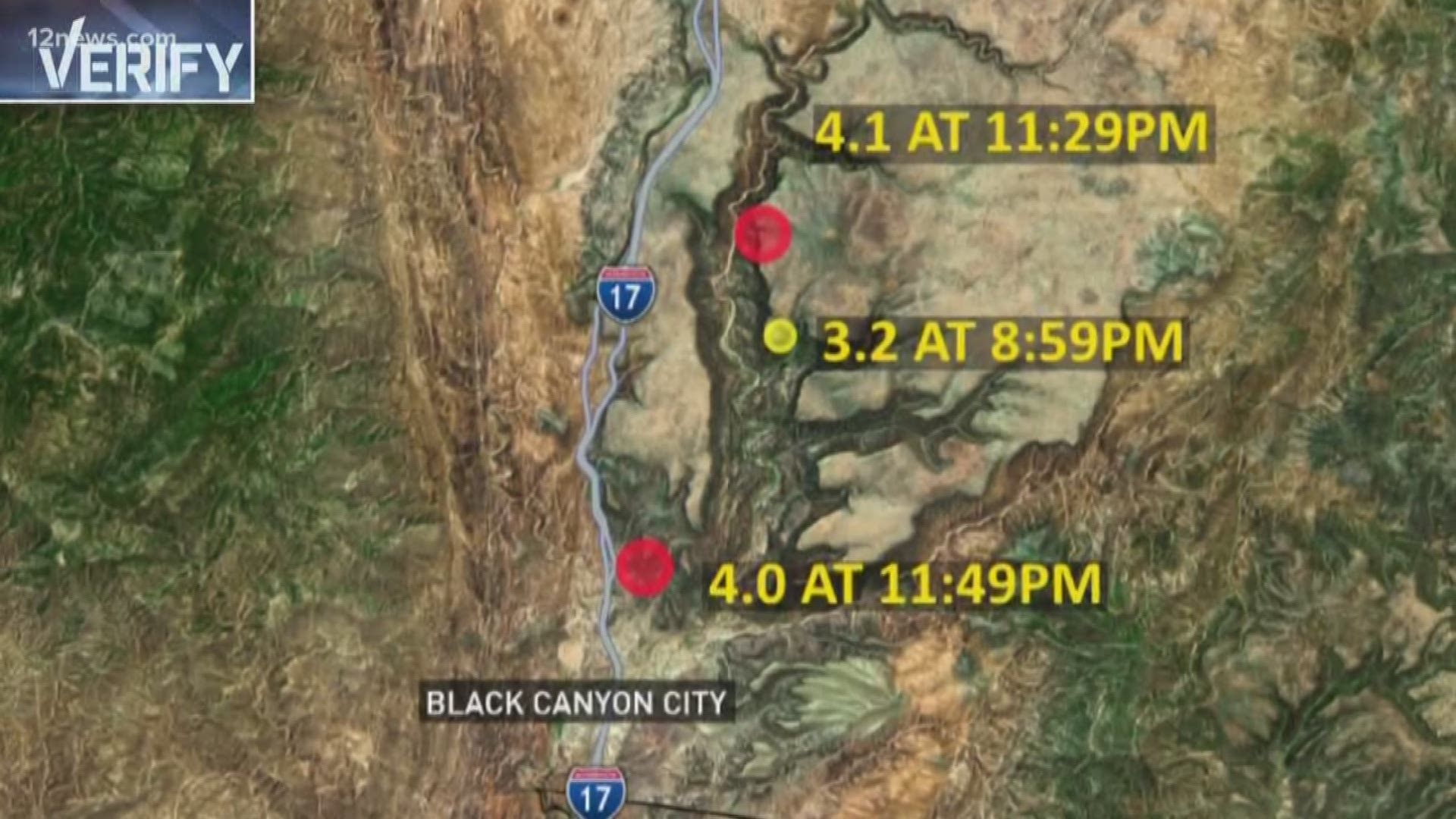A magnitude-3.1 earthquake hit the Flagstaff area Sunday afternoon around 2:30, according to the U.S. Geological Survey. The quake didn’t do any damage, but it was felt by thousands of people in Flagstaff and surrounding cities.
It has many people wondering if the "Big One" will ever hit Phoenix. Team 12 talked with a scientist today who told us some surprising things about the Copper states seismic activity.
Since 1852 we’ve had 3,500 seismic events ranging from not detectable to a 7.5 magnitude quake in near Douglas, Arizona all the way back in 1887. “We have a number of active faults in Arizona. They don’t rupture frequently. So it’s infrequent but they’re capable of rupturing magnitude 6 or 7,” said Dr. Michael Conway, a researcher with the U.S. Geological Survey.
Dr. Conway keeps track of seismic activity for the USGS in Arizona. He says Sunday’s 3.1-magnitude earthquake in Flagstaff isn’t a cause for major alarm, but there is the possibility of stronger quakes.
"Up in the Flagstaff area, there's the Lake Mary fault, and it is about a 45-mile fault and is capable of producing a 7.0-magnitude event,” said Conway.


Arizona experiences between 50 to 100 quakes a year—most that go unfelt.
Recent strong quakes include a 4.9-magnitude quake in 1976 near Prescott, in 2005 a 5.3-magnitude earthquake shook Flagstaff, in 2014 a 5.2-magnitude quake rocked the Arizona/New Mexico Border and in 2015 a 4.1-magnitude earthquake that was felt in Phoenix rattled Black Canyon City.
Dr. Conway says despite the proximity of those, the probability that Phoenix would ever experience the Big One is highly unlikely.
“There’s not a lot of active faults in the Phoenix basin area. But sometimes these earthquakes can be felt for hundreds and thousands of miles. There’s a handful near the McDowell mountains,” said Conway.
As for Northern Arizona, that’s a different story. There’s a much greater possibility a strong quake could happen—it’s just impossible to say when.
"There are a lot of active faults in Northern Arizona. There’s the Northern Arizona seismic zone that encapsulates the Flagstaff area, and we anticipate 50 to 75 events up there annually.
Earthquake activity in the Copper State has prompted the USGS to start " The Great Shakeout" each year. It's an event that prepares residents for an earthquake.
Dr. Conway says 114,000 people participated this year and he expects that number to grow next year.
"That event lets us educate people on what to do if you find yourself in an earthquake. We suggest getting underneath something sturdy like a table. Then wait it out," said Conway.
So we can verify for Phoenicians that it may be more likely to feel an earthquake, but not experience its dangerous impacts.

